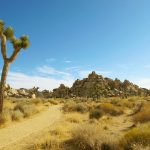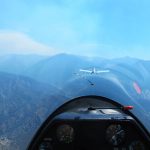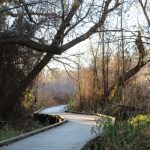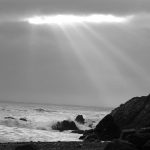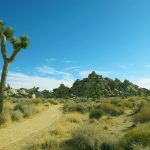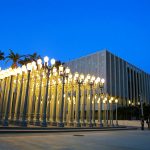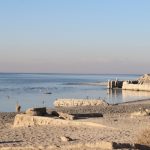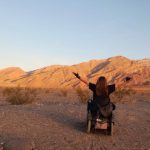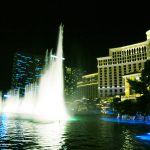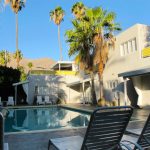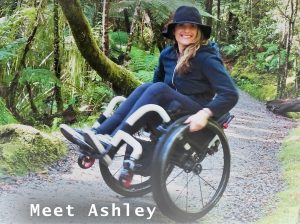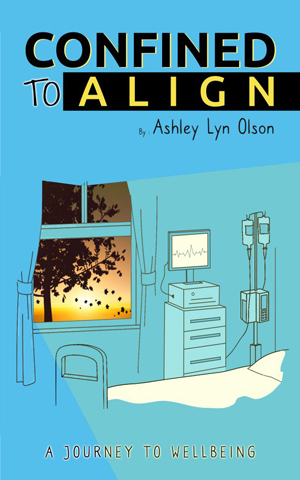Native American tribes moved into the area and inhabited it for thousands of years, leaving artifacts and clues to their culture written in stone as petroglyph rock art. In 1774, Captain Juan Bautista de Anza forged a trail from Sonora, Mexico through this territory to California. Determined pioneers and Butterfield Overland Mail stagecoaches followed it through this harsh environment. In addition to its rich history, today the park is treasured for its stunning desert vistas; kaleidoscopic spring wildflower display; clear, dark skies for star-gazing; and wildlife inhabitants such as the bighorn sheep that live in the Santa Rosa Mountains and the Swainson’s Hawks that pass through on their spring migration.
I enjoyed exploring this state park’s wide-open spaces and was grateful for the accessible features. I’m already planning to visit this desert wonderland again to see some more of its remote, rugged beauty.
Getting Here
It’s best to visit this park in the cooler months of the year, approximately October 15 through May 15. Summer temperatures consistently top 100 degrees, making exposure dangerous as well as uncomfortable. Some services and recreation areas may be closed or operate on reduced hours during the summer months. Regardless of the time of year, there is little shade and the sun is intense. Bring a hat, sunglasses, sunscreen, and plenty of water. Be alert for signs of dehydration and overheating.
Anza-Borrego Desert State Park is located on the eastern side of San Diego County, California. Portions of it extend into Imperial County to the east and Riverside County to the north. The Visitor Center is located at 200 Palm Canyon Dr. in the town of Borrego Springs, about a two-hour drive from the cities of San Diego, Riverside, or Palm Springs. From Interstate 8, take Rt. 79 north (exit 40) to Julian, Rt. 78 east, and S3 north to Borrego Springs. From Interstate 15, take exit 32 at Escondido and follow Rt. 78 east to Julian, then take Rt. 78 east, and S3 north to Borrego Springs. From Interstate 10, take exit 145 and follow Rt. 86 south, at Salton City, take S22 west to Borrego Springs.
If you have time and want to take a more leisurely, scenic route from Palm Springs, you can use the Palms to Pines Scenic Byway through the Santa Rosa and San Jacinto Mountains National Monument. From Palm Desert, follow Rt. 74 south. There is a visitor center for the national monument located just outside the city. After you pass it, the road climbs a series of switchback curves into the mountains. A parking area at the top of the grade offers stunning views of the Coachella Valley.
A few miles further, watch for the Cahuilla-Tewanet Vista Point. There is a parking area there and a paved pathway to an overlook of a canyon in the San Bernardino Forest. Continue to follow Rt. 74 west to Rt. 371 and turn left. Go through Anza, then turn left on Rt. 79 East at Aguanga. Go through Warner Springs then turn left on S2 east and continue on S22 east to Borrego Springs. There are sweeping views of the desert and Salton Sea in the distance as you descend the grade into Borrego Springs – watch for a Vista pullout.
Exploring the Desert
Unfortunately, because this is such a remote desert area, some of the points of interest can be reached only on primitive dirt roads with a high-clearance 4WD vehicle (Coyote Canyon, Font’s Point) or on foot (Palm Canyon, Mountain Palm Springs). My focus in this article is on destinations near Borrego Springs that are easily reached by passenger car and have wheelchair-accessible features.
The Visitor Center for Anza-Borrego Desert State Park is located 1.7 miles west of Borrego Springs at the end of Palm Canyon Drive. It’s open from 9 a.m. to 5 p.m. daily, except weekends only June -September. There are 4 handicapped parking spaces, and one van accessible. A 300-foot paved walkway leads from the parking lot to the center. The building is on one level and has automatic doors. Inside you will find educational exhibits, an award-winning film, helpful rangers with maps and information, and a gift shop. Accessible restrooms are available in a separate building beside the parking lot.
An interpretive nature trail through the desert begins just outside the visitor center. This trail is a 0.25-mile loop with a level, hard-packed, sandy surface suitable for wheelchairs. I was able to negotiate it in a manual chair without assistance.
The Borrego Palm Canyon Campground is located near the visitor center and there is a 0.75-mile all-access trail between the two sites. This easy, paved trail is wide and level, with benches, exhibits, and interpretive signs. Most wheelchair users should be able to use this trail without assistance.
Culp Valley Campground is located approximately 8.5 miles southwest of Borrego Springs via Rt. S22 “Montezuma Valley Road”. There are spectacular views of the valley as you climb into the mountains; watch for a pull-out for the scenic vista. This is a primitive campground and is not well-marked; look for it on the right as you reach the top of the grade. Enter the campground and drive to the rear, watching for a handicapped parking space. This is the trailhead for the accessible Culp Valley Trail which leads 0.5 miles to two stunning overlooks of the valley below. There are slight grades and the trail surface is hard-packed dirt and gravel, but there are sections where deep sand or pebbles have washed onto the trail. It is likely to be muddy following the rain. I was grateful to have assistance on some sections, but the view was worth the challenge! When entering the campground from the road there is an accessible restroom on the right side, not at the trailhead. This area is all firmly packed sand and sometimes winter washouts cause large gaps that may prevent wheelchair accessible vehicles from crossing.
Bonus Attraction
When you have finished exploring the trails, be sure to drive around Borrego Springs to see the fanciful metal sculptures of Galleta Meadows Estate. Numerous sculptures of larger-than-life creatures are scattered through the desert landscape along Borrego Springs Road like a drive-through sculpture garden. Most of them can be seen without leaving the comfort of your vehicle. To get closer to most of the sculptures off-roading is required on hard-packed sand, and with careful driving, wheelchair accessible vehicles can explore too.
Where to Sleep and Eat
There are several additional campgrounds in the park. The Borrego Palm Canyon Campground near the visitor center has the most accessible features. Three tent sites are accessible, with 12 x 12 pads on soft sand. Two RV sites with full hookups are accessible. There are five accessible toilet rooms with separate showers dispersed throughout the campground, with accessible pathways to the adapted campsites and one handicapped parking space near each. Tamarisk Grove Campground, about 20 miles south of Borrego Springs via Rt. S3 offers three accessible campsites and an accessible restroom and shower building with one adjacent parking space. This campground closes in summer. Bow Willow Primitive Campground, about 54 miles south of Borrego Springs on Rt. S2 has two accessible campsites and a non-flush restroom. Drought conditions may cause water restrictions at the campgrounds that necessitate the use of portable toilets. You may also need to bring your potable water; check with the park service before you go.
When I was in the area to visit the Anza-Borrego Desert, I also went to Joshua Tree National Park and the Salton Sea, so I stayed at Hampton Inn in Palm Desert which was centrally located and completely accessible. There is a full range of accommodations in the Coachella Valley cities of Indio, Palm Springs, and Palm Desert. If you want to be closer to the state park, there are some inns and resorts in the town of Borrego Springs but these are not national chains. Inquire with the individual properties about their level of accessibility. There are also several restaurants in town. I ate lunch at Carmelita’s Mexican Grill where the food and service were both excellent. The building is accessible but I did not try the restroom.

